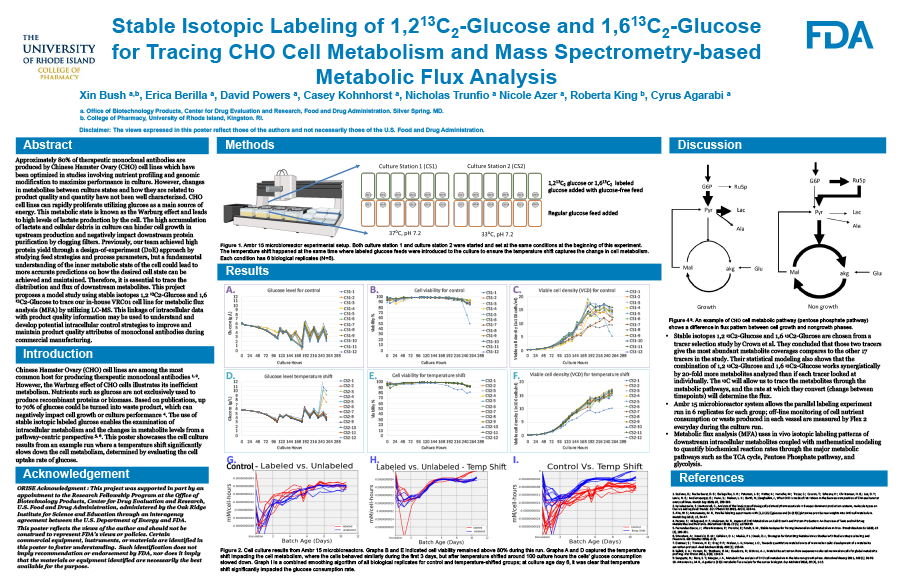2023 FDA Science Forum
Stable Isotopic Labeling of 1,2 13C2-Glucose and 1,6 13C2-Glucose for Tracing CHO Cell Metabolism and Mass Spectrometry-based Metabolic Flux Analysis
- Authors:
- Center:
-
Contributing OfficeCenter for Drug Evaluation and Research
Abstract
Approximately 80% of therapeutic monoclonal antibodies are produced by Chinese Hamster Ovary (CHO) cell lines which have been optimized in studies involving nutrient profiling and genomic modification to maximize performance in culture. However, changes in metabolites between culture states and how they are related to product quality and quantity have not been well characterized. CHO cell lines can rapidly proliferate utilizing glucose as a main source of energy. This metabolic state is known as the Warburg effect and leads to high levels of lactate production by the cell. The high accumulation of lactate and cellular debris in culture can hinder cell growth in upstream production and negatively impact downstream protein purification by clogging filters. Previously, our team achieved high protein yield through a design-of-experiment (DoE) approach by studying feed strategies and process parameters, but a fundamental understanding of the inner metabolic state of the cell could lead to more accurate predictions on how the desired cell state can be achieved and maintained. Therefore, it is essential to trace the distribution and flux of downstream metabolites. A model study using stable isotopes 1,2 13C2-Glucose and 1,6 13C2-Glucose to trace our in-house VRC01 CHO cell line for metabolic flux analysis (MFA) by utilizing LC-MS is presented. This linkage of intracellular data with product quality information may be used to understand and develop potential intracellular control strategies to improve and maintain product quality attributes of monoclonal antibodies during commercial manufacturing.

